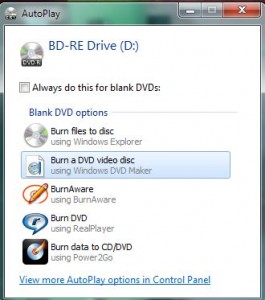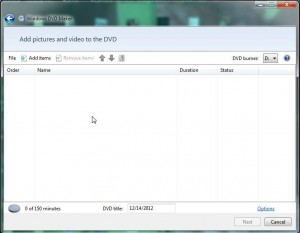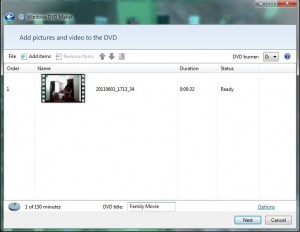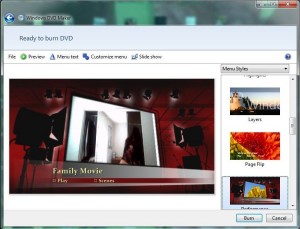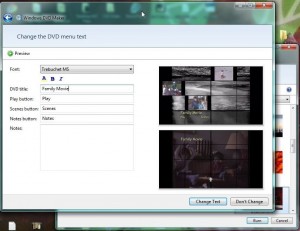Instead of watching a video file on your computer, you might want to see it on the big TV screen in your living room or family room. While you could hook up your computer to your HDTV, it’s sometimes easier to simply pop a disk into your DVD player. How do you get a video file from your computer onto a DVD disk that you can watch on any tabletop DVD player? Here’s how we do it:
NOTE: You need a DVD burner for this project. Virtually every computer, whether it’s a laptop or a desktop, comes with a burner. If not, you can pick up an external USB burner for under $40.00.
1. Download and install DVD Flick. It’s free, don’t worry.
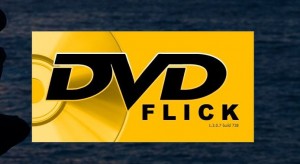
2. When DVD Flick is ready to go, find the video file that you want to make into a DVD and open it, either drag it into the DVD Flick interface or use the Add button on the GUI. DVD Flick will work with just about any video file, even home movies that you shoot with your camcorder or digicam.
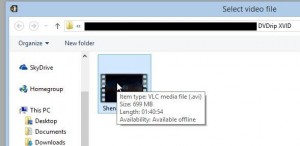
3. DVD authoring means that you’re taking a plain video file that you watch on your computer using VLC Media Player or Windows Media Player, etc., then adding a clickable menu that looks almost the same as a DVD that you buy in a store and burning it to a writable DVD disk. This final product can be played in any tabletop DVD player as well as in any DVD player in any computer, Mac/Linux or Windows. That means that you have to tell DVD Flick which menu style you want to use. Click Menu Settings to see the choices and make your decision:
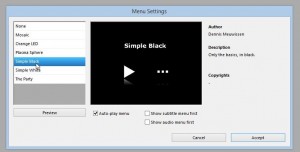
4. You have to set some parameters for DVD Flick. Click on Project Settings to see this:
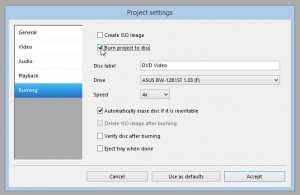
5. If you’re going to burn a few copies of the same disk, name your project and save it. That way you can burn the same video at some later date without having to do everything again.
6. Once you’ve got everything set, you have to tell DVD Flick where to save the temporary files it creates in order to make your DVD. Basically, it takes your video file and converts it into a package, according to the parameters you’ve just set, then burns the whole thing to a blank, writable DVD disk. Once you make sure the DVD works, you can go back and delete the files but, for now, look down on the bottom left of the GUI. DVD Flick saves the first DVD you make in a folder named ‘dvd’, usually in your Documents folder. You can either name each folder with the name of the video or add a number at the end of ‘dvd’ as we have here:
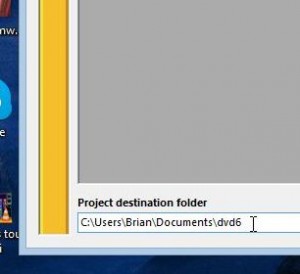
That’s pretty much all you have to do. When you’re ready, click ‘Create DVD’ up at the top, after making sure you have a blank DVD disk in the burner.
NOTE: We have wondered how many videos we can put on one DVD. The answer doesn’t seem to be out there but we’ve figured out that if you use a time limit of about an hour and a half, you’ll be fine. If the video you are burning isn’t great quality to begin with, it is possible to get a couple of full-length movies on one DVD. If you’re burning home movies, you can create separate menu titles for each one.
Lastly, this process is NOT for ripping a DVD that you have purchased. DVD ripping (copying) is not the same as authoring. We use DVD Shrink for ripping. It’s free and we may write about it at some point later on.
Thanks for reading! Questions or comments are welcome. You can also ask questions on our Facebook page. Here is the link: Computers Made Simple on Facebook
_______________________________________________
Here’s a link that might help us if you are interested in hosting your own blog with Fatcow Hosting. We’ve signed up to become an affiliate and we make a bit of money if you sign up for hosting via this link: FatCow Hosting Thanks!

